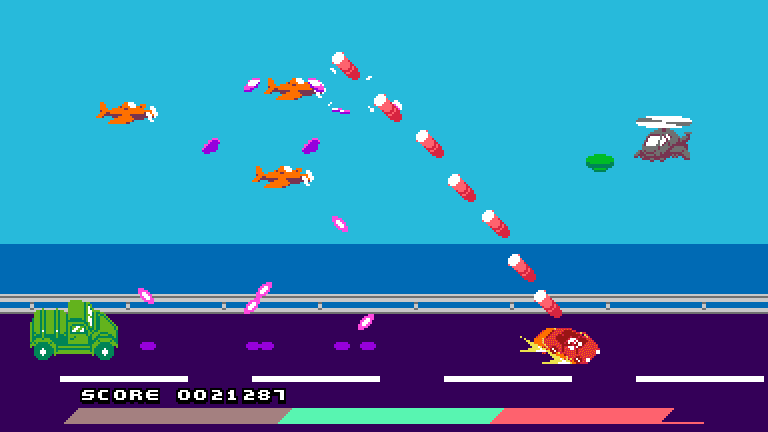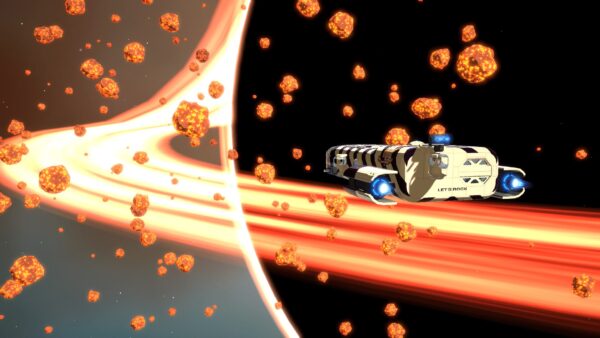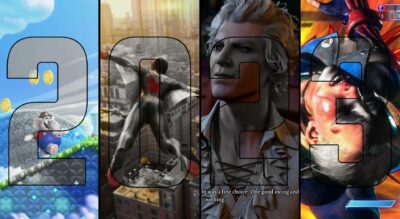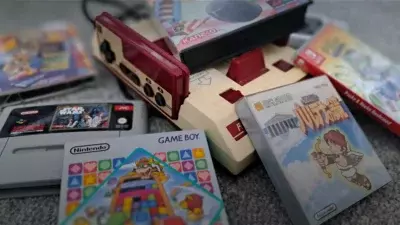
Video games have always been driven by the latest technological trends, with big-budget blockbusters frequently pushing the limits of graphical fidelity and processing power. In more recent years, however, we’ve become more appreciative of previous generations’ achievements.
If anything, both industry and consumers are now more enamoured with the past than ever, from miniature versions of classic consoles to the widespread use of pixel art in the indie sphere. Indeed, some of the most acclaimed and brilliant games of recent years have featured a visual style harking back to the past, from Celeste to Undertale. You certainly wouldn’t expect anything different from Starbound and Wargroove publisher, Chucklefish.
While pixel art is merely an aesthetic, it’s a style that transports the player back to the 8-bit and 16-bit eras of the 1980s and 1990s. But when developers aren’t bound by the same hardware restrictions as they were 20 or more years ago, is there more to the use of pixel art than mere rose-tinted nostalgia? Surely these games are just a case of applying a retro aesthetic to a modern game, with complex AI and physics that couldn’t have been achieved on an ageing piece of hardware like the Super Nintendo?
There are some developers, though, who are capable of coming up with modern ideas and sensibilities within the parameters of what a genuine 8-bit or 16-bit game would allow. In our first case, it’s about creating a whole fictional 8-bit platform.
UFO 50
UFO 50 is a forthcoming collection of 50 games made by a collective of developers, among them Derek Yu of Spelunky fame. These aren’t mini-games nor WarioWare-style ‘microgames’, either, but complete experiences spanning a wealth of genres and ideas.
What ties them together is a backstory in which each title was created by a progressive company in the 1980s before it tumbled into obscurity. The story provides the parameters within which each developer could create games with an authentic 8-bit look.
For many gamers and developers, particularly in the US, the 8-bit era is immediately synonymous with the Nintendo Entertainment System. In reality, hardware specifications varied wildly between such systems as the Commodore 64, ZX Spectrum, and Sega Master System (even the Atari 2600 was 8-bit, though not graphically).

UFO 50’s palette demands creativity from its limitations
It’s something Yu acknowledges, hence the team’s decision to look at other hardware besides the NES. “The vibe we were going for is slightly off the beaten path,” he says. “So the MSX was a big influence on us – we liked that it was a computer standard rather than a dedicated games console. But we did also research consoles like the Dendy, a Taiwanese Famicom clone that ended up being a huge hit in Russia.”
In UFO 50, its games all adhere to a 32-colour palette, while sprites are only allowed four colours (including black). Animations are also restricted to around four frames – something which Yu says took some time to get used to. Then again, these parameters were less about restriction and more about balancing authenticity with speed of creation.
“It’s a lot easier adding characters when you can get away with only two or three frames for an animation,” Yu says, “We went for limitations that would get us the most ‘bang for the buck’, rather than being so strict that you’re forced to constantly check whether something is right or not, which can slow development down.”
Yu and his collective also made a conscious decision not to be too slavishly authentic to the technical limitations of old hardware, like sprite-flickering or slowdown, which on the specs of a modern PC would be of little benefit other than mere artificial mimicry.
More importantly, staying within the fiction’s technical parameters hasn’t conflicted with the desire to incorporate modern game design into the collection. “I imagine the majority of people who grew up with 8-bit gaming don’t miss taking cheap hits or having to rescue a princess in every other title,” says Yu. “Throwing out those tired tropes and traditions just makes the games better.”
The Messenger
When a modern pixel art game does take technical liberties, who’s to say whether it’s influenced by an 8-bit or 16-bit game? If, like developer Sabotage Studio, you’re making a game that incorporates the visuals of both 8-bit and 16-bit eras, then that distinction needs to be crystal clear.
The Messenger began as an 8-bit throwback to director Thierry Boulanger’s favourite game, Ninja Gaiden II, on the NES, albeit with its own mechanical twist: cloudstepping, which allows your character to perform another jump in the air after slashing an object.

The Messenger takes cues from Ninja Gaiden II
The Messenger’s time travel narrative also inspired the decision to depict the future in a technically advanced 16-bit style, allowing for more colours and detail, and double the animation frames of the 8-bit version. Just to complicate things further, the player can switch between these two eras (and therefore 16-bit and 8-bit styles), requiring Boulanger and his collaborators to draw every asset twice.
“It was quite a big move to double all the assets, because every single area is made in both renditions,” says Boulanger. “At first it wasn’t going to be all of them, but then we designed accordingly, because we knew players expected to see the sprites in both versions and to hear tracks in both versions.”
What’s perhaps surprising is that while the 8-bit version is clearly influenced by the NES, the 16-bit style is actually based on the Mega Drive, notably the soundtrack from composer Rainbowdragoneyes, which was created using the Deflemask tracker’s Yamaha YM2612 Mega Drive sampler. This makes The Messenger not only a time-travelling adventure, but a cross-platform one.
Although Boulanger says he plays Ninja Gaiden II on the NES every two weeks, he wasn’t looking to mimic the game’s every aspect in The Messenger. “Everything to do with the controls was about removing friction,” he says, “So things that are different from Ninja Gaiden: say you’re running and you attack; your character stops running to attack while standing, which hinders your movement.
“The game becomes about the timing and precision, and not feeling the weight of having to stop to attack.”
It might be better, then, to consider the 8-bit iteration of The Messenger as more of a super-optimised NES game than one that reflects it accurately. But even with the graphical differences between the two, it was ultimately important for elements like hitboxes and mechanics to remain consistent, even if, say, the number of abilities you acquire in later areas are more complex than you could realistically input on a two-button NES controller.
“That was an idea we had, where going into the future you’d be the master ninja and you’d have all your skills, and then when you’re stuck in 8-bit you have to find a portal to access this path with the skills,” explains Boulanger. “But as we had real-time seamless transitions and you’d switch very often, sometimes mid-jump or in the middle of a boss fight, it became clear that it would be unfair to switch the controls on you.”
Tanglewood
Of course, by playing around with two console generation styles in one game, The Messenger’s time-bending concept unsurprisingly bends the rules on technical limitations.
When you consider that it and UFO 50 are games made using modern engines like Unity and GameMaker Studio respectively, sticking within the authentic parameters of retro platforms may be a fool’s errand. In Matt Phillips’ case, the only solution was to go right back to the original hardware itself.
Unlike the above, Phillips has a development background in working on triple-A projects, from the LEGO franchise to Homefront: The Revolution, but had always dreamed of releasing his own Mega Drive game.
Not just a game that replicates the look and sound of a classic Mega Drive game, but one produced on a cartridge that can run on the original hardware. He finally realised this dream in 2018 with the release of adventure platformer, Tanglewood.

A real Mega Drive game, 2018
This not only required Philips to learn how to program in the raw assembly language of the Mega Drive, but also the painstaking effort of trawling niche forums and contacting electronics experts over several years just to acquire all the necessary parts to get a complete and functioning Assembly kit. Unsurprisingly, having been out of the hardware race for nearly two decades, Sega was unable to assist.
It’s certainly the most extreme of all the methods of making a game that’s faithfully within the parameters of retro hardware, because this really was about using the original hardware: no nips, no tucks, no shortcuts. “[With retro indie games] you can cheat,” says Phillips.
“You can add more colours than palettes supported back then, you can go over sprite limits. Even down to the resolution, you can render up to 1080p widescreen, which wasn’t a thing back then. So if you wanted to make a game that was very true to the 16-bit style, the only way to do it is to make a 16-bit game, then your hand’s forced to obey the restrictions.”
Although the setting of Tanglewood, where you play as an adorable fox, echoes the classic mascot platformers on the Mega Drive, from Sonic the Hedgehog to The Lion King, Phillips actually took inspiration from more contemporary games and game design, citing Limbo or PS1 era platformers like Heart of Darkness and Abe’s Oddysee, while much preferring the physics-based movements of modern platformers.
Attempting to translate modern physics to a 16-bit console’s limited CPU presented a huge challenge that other contemporary, retro-style developers don’t need to take into account. To manage this, Phillips had to simplify the physics and write bespoke code to give the impression of objects behaving like there are collision effects going on.
“There were a lot of little hacks and tricks to get things to work and save CPU cycles,” he says. “One of the things I had to take out was buoyancy. I had a lot of puzzles designed around objects floating on top of water, but that was using way too much CPU.” It was just one of many features that, owing to the hardware limitations, had to be left on the cutting room floor.
It’s fair to say that few developers would go to the same lengths to faithfully create an authentic retro game, not when the likes of GameMaker and Unity make the process so much simpler. But Phillips’ passion has paid off, and he already has plans to make more Mega Drive games in the future.
Ultimately, it proves that there’s more to making a retro game than just paying lip service to pixels. “I recommend all developers try and limit themselves with regards to CPU usage, memory, palettes, and try to make a game on a limited system, because it changes your perspective on how you approach game design and programming,” he explains.
“It means you have to go back to the drawing board with regard to game design, because you have to make it fun from the outset. You can’t throw pretty graphics or high-resolution audio at it to try and polish it – you have to base it on game design and playability alone. I think there’s a lot to learn from that.”





